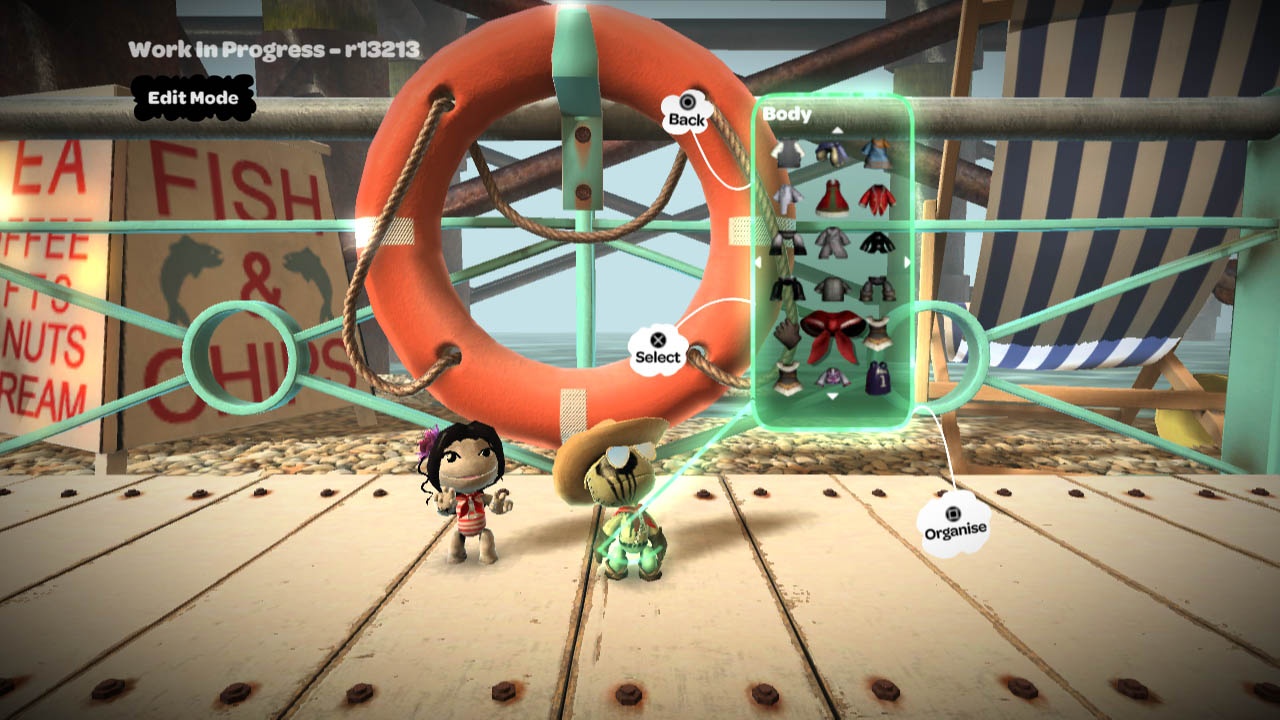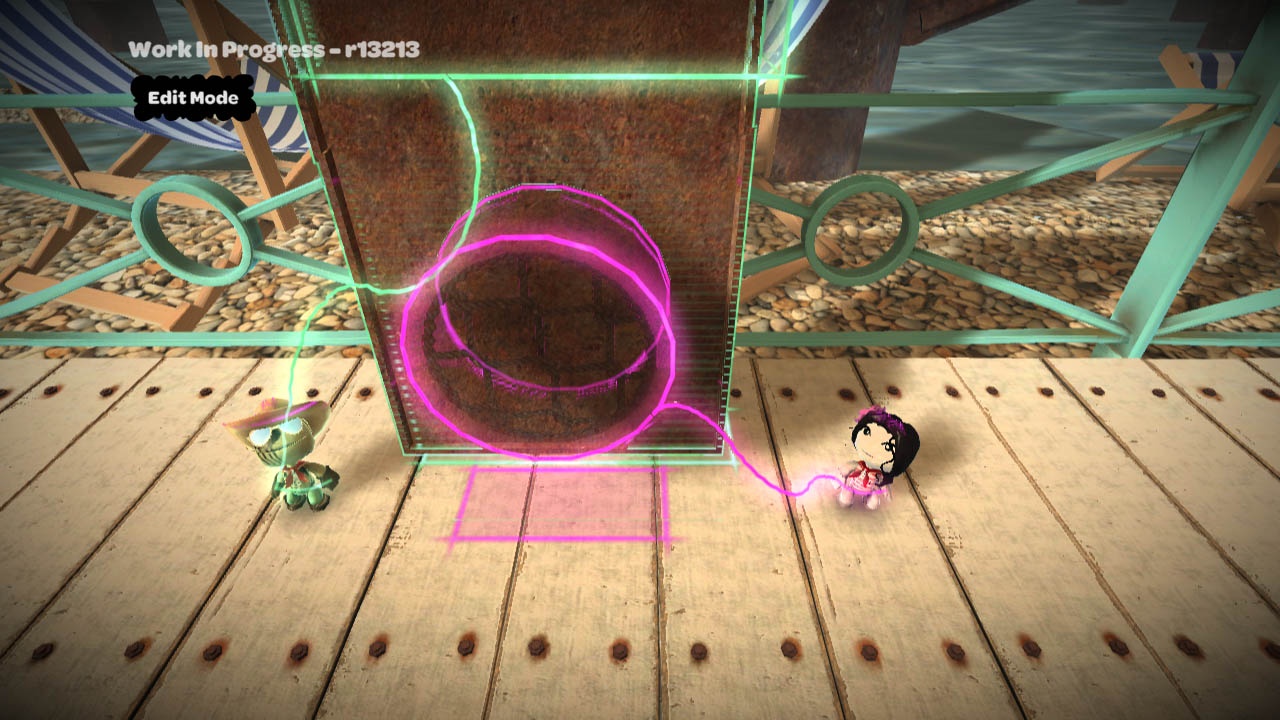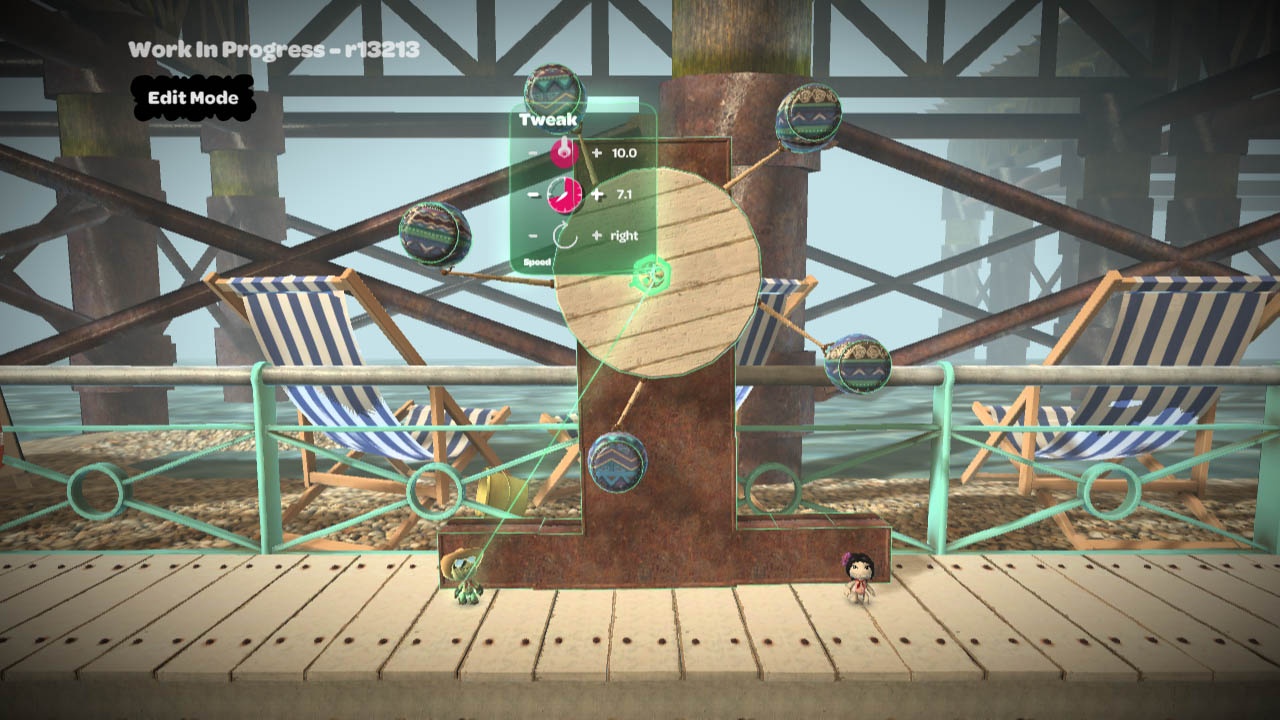LittleBigPlanet Create Hands-On
We played LittleBigPlanet's Create mode for the first time recently, while the game's designers sat alongside to help. We grabbed a Sixaxis and let our creative juices flow.
Between the E3 Media & Business Summit, Game Developers Conference, Consumer Electronics Show, and the exclusive preview we attended recently, we've certainly spent a lot of time with LittleBigPlanet. The game has a lot of potential, and judging by the number of times it's been shown off by its publisher, it's a big deal for Sony. Despite this heavy amount of playtime, developer Media Molecule has never actually let us create something in LittleBigPlanet--something of a large omission given the game's tagline, "explore, create, share." We've seen the developers creating things in previous encounters, but they've never unlocked the toolbox for us to build something ourselves. But with the game recently entering alpha and momentum building toward its October release, Sony invited us to a central London location for an extended creative session with the game. Pitting us against other journalists from around the world, we took the opportunity to flex our creative muscles while talking to the developers about the game.

The guiding principle behind LittleBigPlanet's creation toolset is that it should be powerful enough to let you re-create anything that you see in the game, while remaining simple and accessible enough for people to operate with the Sixaxis or Dual Shock 3 controllers, without the need for a manual. The result is the poppet--a small bubble that can be accessed by pressing square while creating a level. This brings up all the objects that you can drop into the world--a small list to begin with, but one that grows as you unlock items through the Play part of the game.
Media Molecule's Mark Healey and Alex Evans explained that while it may take you some time to create levels as intricate as their own, they expect to be matched, if not beaten, by players in the long term. And while it's traditional for only a small number of users to create things, they hope that a higher proportion of people than normal will build and share with the community thanks to the simplicity of the tools on offer. While many will be content with building a ramp with a "LOLZ" sticker on it, there are lots of possibilities for creating levels outside of the traditional left-to-right platformer model.
By way of example, Mark and Alex showed how one of their designers built a skipping minigame. The level was set up with a simple challenge for players--to survive the accelerating rotations of the rope by jumping and remaining on the platform. As the rope moved quicker, players had to perform smaller jumps in order to return to the ground before the next rotation. It was a deceivingly simple level to build, and although some of the physics may have been difficult to work out, the Media Molecule guys explained that the hinges for the rope were arranged in a similar way to building vehicles in the game.
Shortly after our look at what the designers could create, it was time for us to start building. We got into small groups, each with a member of Media Molecule to guide us, and were unleashed with everything the creation tools had to offer. The full game will ship with video tutorials to help you learn the system. These are meant to make it as simple for you as it was for us, with one of the game's designers sat next to us. Practically every object was opened up to us from the start, too, allowing us to see all the items that were available for unlocking. With so many on offer, it was good to see that you can put certain objects in a favourites menu, and that you can also give certain items to other players for finishing one of your user-created levels.

Dropping elements into LittleBigPlanet is a simple process of opening the poppet and choosing the object you want to use. Each level operates on three planes, so designers need to think about whether players can simply pop in and out of the foreground or background to pass by any obstacles that you place. Obviously, testing out your creations will be half of the building process, as you don't want people to get stuck with no way to get to the end of the level. To preempt this problem, Media Molecule have enforced regular respawn points into user-generated levels, so that players can always get out of a situation they become trapped in. If you ever do get stuck in LittleBigPlanet, then the game has one of the funniest suicide animations we've ever seen, with your character holding its breath until it explodes.
Through playing around with the game and speaking to Media Molecule, we were able to learn a lot of new facts about what we can expect from the finished product. One of the coolest new features was being able to use the PlayStation Eye camera to create custom stickers to place on objects, using photos of faces, words, or any other designs that can be held before a camera. For many people on our press day, the first inclination was to take a picture of their face and slap it onto one of the walls, but there are other more creative ways of using the feature. Grabbing a pen and paper, we were able to write "Hello mum," and get it into the game. Using the same technique, you'll be able to place tips, secrets, or even narratives into your levels.

Once saved, your creations are stored on the PlayStation hard drive and represented in-game by the LittleBigMoon, a satellite of the main planet itself, where pictures of your creations are shown in the craters. The only limitation is the 70 slots available for saving, although with the large size of the level templates, we imagine that this number will last people a relatively long time. Your levels can be shared online freely, or just amongst those on your friends list. You can even create a locked level and then send out keys to people as presents--fans of your Web site or MySpace page, for example. Your public levels will be open to the community to play, tag, and recommend, making it easy for everyone to play only the best levels out there, or just those themed around Christmas, for example. Your online profile will also mark out the sort of player that you are, with three distinct categories--player, creator, or sharer.
While our LittleBigPlanet level was fully functioning and practically bug free, it unfortunately didn't come close to what some of the other groups managed to come up with. Our idea was to start the level with a gallery of our faces built using the PlayStation Eye, and then throw in some seesaw based puzzles and fire-and-ice obstacles. Thanks to a decent level of experimentation, our creation eventually came third in the overall challenge, beaten by a level that told a joke in pictorial form, and the winning entry which told a narrative about relationships. All three levels showed a completely different approach--some of them trying to replicate the traditional levels created by Media Molecule, others just using the engine to set up an elaborate pun. Either way, expect similarly varied results once these tools make it into the public domain.
While the story mode wasn't on show during our preview day, there was inevitably some discussion around it. There is a narrative, although Media Molecule wouldn't reveal anything about it, and it will be a branching story with some levels that are designed to be played in multiplayer. The entire story mode will be playable by up to four characters locally or online, with players able to communicate via built-in voice chat if they're opting for the latter. The one feature that was hinted at but never confirmed was a video recording feature. When questioned by us, Mark and Alex looked sheepish before saying that it "could be in the game," but that it's not something they're confirming at this time.
LittleBigPlanet's Create mode is as easy to use as the developers originally promised, and while making some of the physics-based elements work can be tricky, there is a huge amount of scope when it comes to what can be created. The creation tools are yet another enticing part of a package we've already fallen in love with, and the recently postponed release date of October 2008 is only making the wait for this game all the more agonizing. But with Sony's track record of showing the game off as often as it can, we're sure to see more of LittleBigPlanet in the coming months.
Got a news tip or want to contact us directly? Email news@gamespot.com
Join the conversation